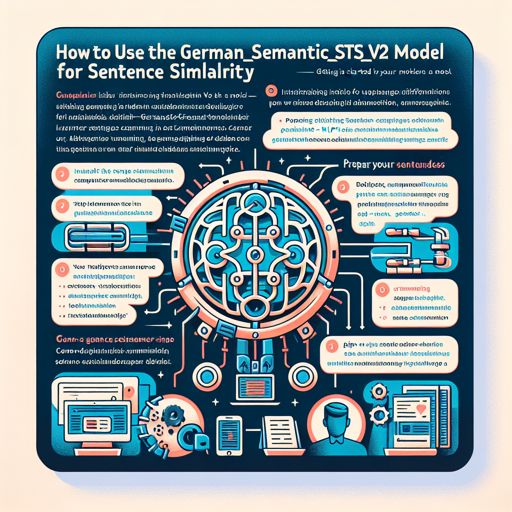In the realm of Natural Language Processing (NLP), comparing sentences for their semantic similarity can be vital for numerous applications such as clustering, semantic search, and intent classification. In this article, we’ll delve into how to effectively use the German_Semantic_STS_V2 model to achieve sentence embeddings, making it easier to measure semantic similarity.
Getting Started with the Model
This model operates using sentence-transformers, which is quite straightforward to use. Follow these steps to get started:
- Install the Sentence-Transformers Library:
pip install -U sentence-transformers - Prepare Your Sentences: Decide on the sentences you wish to compare.
sentences = ["This is an example sentence.", "Each sentence is converted."] - Load the Model and Generate Embeddings:
from sentence_transformers import SentenceTransformer model = SentenceTransformer("aari1995German_Semantic_STS_V2") embeddings = model.encode(sentences) print(embeddings)
Using with HuggingFace Transformers
If you prefer to work without the sentence-transformers library, you can also utilize the HuggingFace Transformers directly. Here’s a step-by-step guide:
- Import Necessary Libraries:
from transformers import AutoTokenizer, AutoModel import torch - Define Mean Pooling Function:
def mean_pooling(model_output, attention_mask): token_embeddings = model_output[0] input_mask_expanded = attention_mask.unsqueeze(-1).expand(token_embeddings.size()).float() return torch.sum(token_embeddings * input_mask_expanded, 1) / torch.clamp(input_mask_expanded.sum(1), min=1e-9) - Load the Model and Perform Tokenization:
tokenizer = AutoTokenizer.from_pretrained("aari1995German_Semantic_STS_V2") model = AutoModel.from_pretrained("aari1995German_Semantic_STS_V2") encoded_input = tokenizer(sentences, padding=True, truncation=True, return_tensors='pt') - Compute Token Embeddings:
with torch.no_grad(): model_output = model(**encoded_input) sentence_embeddings = mean_pooling(model_output, encoded_input['attention_mask']) print("Sentence embeddings:") print(sentence_embeddings)
Understanding the Process with an Analogy
Imagine you have a library filled with books, where each book represents a sentence. When you want to know how similar two books (or sentences) are to one another, you can think of each book as being enriched with details about its content. The German_Semantic_STS_V2 model acts as a librarian who reads and summarizes each book into a unique code (the embeddings). When you want to compare two books, you simply check their codes. The closer the codes are, the more similar the books are in terms of content!
Evaluation Results
Once you’ve fine-tuned the model, you can evaluate its performance using accuracy, v-measure for clustering, or cosine similarity scores. To see how well the model performs against other similar models, you can visit Sentence Embeddings Benchmark.
Troubleshooting
If you encounter issues while implementing the model, consider the following troubleshooting tips:
- Installation Issues: Ensure that the library versions are compatible with your system. Run
pip listto check for installed packages. - Model Loading Errors: Make sure the model name is correctly specified and accessible. You can refer to the official Hugging Face documentation for help.
- Runtime Errors: Debug using print statements to inspect intermediate outputs and ensure tensors are correctly shaped.
For more insights, updates, or to collaborate on AI development projects, stay connected with fxis.ai.
Conclusion
The German_Semantic_STS_V2 model enables powerful sentence similarity comparisons. By following the above instructions, you can leverage this model for diverse applications in natural language understanding. At fxis.ai, we believe that such advancements are crucial for the future of AI, as they enable more comprehensive and effective solutions. Our team is continually exploring new methodologies to push the envelope in artificial intelligence, ensuring that our clients benefit from the latest technological innovations.

